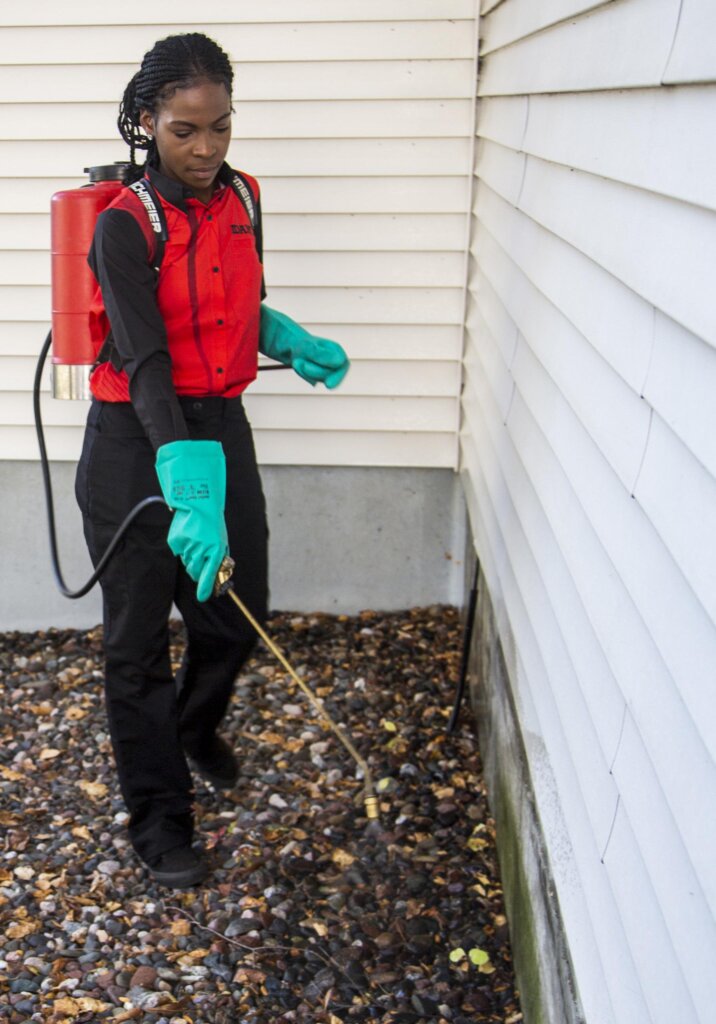Get professional Pest Control for your home and ensure safety.
Eco-Friendly Parasite Control Approaches for Managing Wildlife in Urban Locations
Urban areas frequently find themselves at the intersection of human task and wild animals, leading to distinct obstacles in bug administration. These methods not only safeguard the environment but additionally boost neighborhood engagement in wild animals monitoring. As metropolitan populations continue to expand, comprehending the dynamics of wild animals interactions becomes increasingly critical.
Recognizing Urban Wildlife Dynamics
Recognizing Urban Wildlife Characteristics is necessary for establishing effective and green bug control techniques. Urban locations are progressively becoming environments for various wild animals species, driven by variables such as habitat fragmentation, food availability, and human infringement. Recognizing these characteristics permits a nuanced technique to pest management that straightens with ecological concepts.
Urban wildlife commonly includes types such as raccoons, squirrels, and birds, which adjust to city atmospheres, locating niches in environment-friendly spaces, parks, and even houses. Their visibility can lead to disputes with human beings, particularly when they make use of human resources for food and shelter. Recognizing the behaviors and environmental duties of these species notifies approaches that minimize unfavorable communications while advertising biodiversity.
Furthermore, acknowledging the interdependencies within metropolitan ecosystems assists in determining essential areas for habitat preservation and repair. This expertise adds to the growth of incorporated pest administration (IPM) methods that take into consideration the eco-friendly balance, thereby minimizing dependence on dangerous chemicals. By cultivating coexistence between people and metropolitan wild animals, cities can produce healthier settings that benefit both homeowners and local communities, paving the method for sustainable urban living.
Natural Repellents and Deterrents
Natural repellents and deterrents offer a sustainable alternative to conventional pest control methods by harnessing the power of nature to keep undesirable varieties away. These green remedies commonly make use of plant-based active ingredients, crucial oils, and various other normally happening substances that deter pests without damaging the setting.
One efficient natural repellent is peppermint oil, which is known to repel rats and bugs. Its strong scent is undesirable to lots of insects, making it a popular selection for metropolitan settings. Similarly, vinegar and citrus peels can act as deterrents, as their strong odors are commonly unattractive to various wild animals.
Additionally, diatomaceous planet is a natural powder that can be spread out in areas vulnerable to bug activity, successfully dehydrating and hindering bugs without posing dangers to non-target species. In addition, garlic sprays and neem oil are acknowledged for their capacity to ward off a variety of insects, consisting of both insects and bigger wild animals.
Applying these natural repellents not just lowers reliance on chemical pesticides however also promotes a much healthier urban environment, cultivating a more well balanced conjunction between people and wildlife. By utilizing these strategies, urban areas can effectively take care of insect populations while decreasing environmental effect.
Environment Alteration Techniques
Efficient environment alteration strategies play an important duty in lasting pest management by changing the atmosphere to make it much less helpful to pest infestations. By understanding the environmental dynamics of metropolitan locations, homeowner can carry out calculated alterations that hinder pests while promoting biodiversity.
(Bed Bug Exterminator)One primary technique includes preserving correct hygiene. This includes regular waste removal, securing trash can, and getting rid of standing water to minimize reproducing websites for pests and rats. In addition, landscape design practices such as selecting native plants can enhance ecological balance, providing habitats for advantageous organisms while reducing resources for insects.
One more important approach is to secure entrance points in structures. Checking and repairing splits in structures, walls, and home windows can dramatically minimize insect accessibility. Creating physical obstacles, such as fences or plant barriers, can inhibit wild animals movement right into human-inhabited areas.
Integrated Parasite Administration Practices
Structure upon habitat alteration techniques, incorporated bug monitoring (IPM) techniques offer a holistic technique to controlling insect populations while decreasing environmental influence. IPM combines different strategies, including organic, cultural, mechanical, and chemical controls, to accomplish reliable insect monitoring.
Organic control includes the intro of all-natural predators or parasites to lower pest populaces. Social practices, such as crop turning and hygiene, disrupt pest life cycles and lessen their habitats - Pest Control. Mechanical controls, like traps and obstacles, give immediate relief from bug stress without chemical intervention
Chemical controls are used as a last hope, concentrating on targeted applications that restrict injury to non-target varieties and the environment. The choice of ecologically pleasant chemicals, when essential, is integral to the IPM framework. Additionally, keeping an eye on parasite populaces and analyzing potential damage helps inform decision-making, guaranteeing that interventions are timely and efficient.
Community Involvement and Education

(Equine Pest Protection)Workshops and educational sessions can equip residents with knowledge about indigenous varieties, environment preservation, and efficient non-toxic insect management techniques. Collaboration with institutions, neighborhood companies, and federal government agencies further enhances academic outreach, making sure that vital details reaches varied target markets.
Moreover, community-led initiatives, such as neighborhood clean-up days and habitat reconstruction jobs, not just promote biodiversity yet also enhance neighborhood connections. Pest control service. By urging residents to share their experiences and observations, areas can create targeted methods that attend to particular local pest problems
Including comments from citizens into pest management prepares makes it possible for a more responsive and adaptive technique to wildlife challenges. Inevitably, informed and involved neighborhoods are essential to attaining long-term success in green pest control, leading to healthier urban atmospheres that respect both human and environmental demands.

Final Thought
In conclusion, eco-friendly pest control comes close to offer lasting solutions for managing urban wildlife. By read this post here prioritizing habitat modification, using natural repellents, and carrying out incorporated insect management techniques, areas can cultivate a harmonious coexistence with neighborhood fauna.